 W
WAghaboe is a small village in County Laois, Ireland. It is located on the R434 regional road in the rural hinterland west of the town of Abbeyleix.
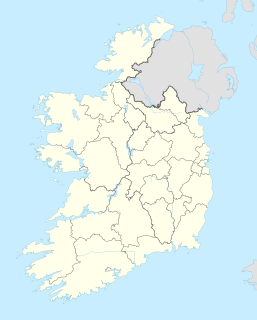 W
WThe Abbey of Aghaboe is one of the most important of the abbeys and priories in County Laois. It was founded in the kingdom of Osraige by St. Canice in the 6th century. In his Vita Sancti Columbae, Adomnán refers to the abbey, saying that its name means a of the cow: "quod Latine Campulus Bovis dicitur, Scotice vero Achadh-bou"
 W
WAnne FitzPatrick, Countess of Upper Ossory was an English noblewoman and the first wife of Augustus FitzRoy, 3rd Duke of Grafton. Grafton divorced her while serving as Prime Minister. She was a noted correspondent of Horace Walpole.
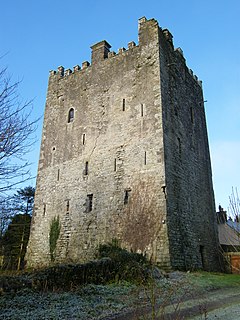 W
WBallaghmore is a small village located on the western side of County Laois, Ireland, southwest of Portlaoise. It is situated in the civil parish of Kyle in the historic barony of Clandonagh.
 W
WSir Barnaby Fitzpatrick, 2nd Baron Upper Ossory, was educated at the court of Henry VIII of England with Edward, Prince of Wales. While he was in France he corresponded regularly with King Edward VI. He was active in suppression of Wyatt's rebellion in 1553. He went home to Ireland, where he had had a lifelong feud with the Earl of Ormonde. His wife and daughter were abducted in 1573 by the Grace family, supposedly at Ormonde's instigation. He killed the rebel Rory O'More in 1578.
 W
WBaron Castletown, of Upper Ossory in the Queen's County, was a title in the Peerage of the United Kingdom. It was created on 10 December 1869 for John FitzPatrick, the former Liberal Member of Parliament for Queen's County. He was the illegitimate son of John FitzPatrick, 2nd Earl of Upper Ossory.
 W
WBernard Edward Barnaby FitzPatrick, 2nd Baron Castletown, KP, CMG, PC (I) was an Anglo-Irish soldier and Conservative Member of Parliament.
 W
WCastletown is a small village and also a parish in County Laois in Ireland.
 W
WCiarán of Saigir, also known as Ciarán mac Luaigne or Saint Kieran, was one of the Twelve Apostles of Ireland and is considered the first saint to have been born in Ireland, although the legend that he preceded Saint Patrick is questionable. Ciarán was bishop of Saighir (Seir-Kieran) and remains the patron saint of its successor, the diocese of Ossory.
 W
WConstance Edwina Lewis, CBE, also known as Shelagh, was an English socialite and peeress.
 W
WMary Adelaide Virginia Thomasina Eupatoria "Patsy" Cornwallis-West was an Irish born aristocrat and a prominent mistress of the future King Edward VII.
 W
WCullahill Castle was the principal stronghold of the MacGillapatricks of Upper Ossory built around 1425 and destroyed around 1650. Cullahill Castle takes its name from an ancient forest that covered Cullahill Mountain and extended down to Cullahill village.
 W
WCullahill or Cullohill is a small village situated on the R639 road in County Laois, Ireland. Cullahill takes its name from an ancient forest that covered Cullahill Mountain and extended down to Cullahill Castle.
 W
WDaisy, Princess of Pless was a noted society beauty in the Edwardian period, and during her marriage a member of one of the wealthiest European noble families. Daisy and her husband Hans Heinrich XV were the owners of large estates and coal mines in Silesia which brought the Hochbergs enormous fortune.
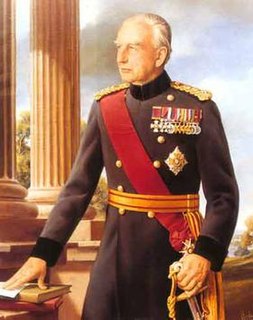 W
WGeneral Sir Geoffrey Richard Desmond Fitzpatrick, was a senior British Army officer who served as commander of the British Army of the Rhine and Deputy Supreme Allied Commander Europe. After his retirement from the army he was appointed Lieutenant Governor of Jersey and later held a ceremonial position in the Royal Household.
 W
WGrangefertagh is a former abbey located in County Kilkenny, Ireland. It is today a National Monument.
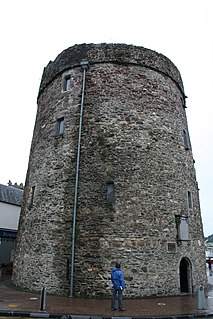 W
WIvar of Waterford was the Norse king of Waterford from at least 969 until his death in the year 1000, and also reigned as King of Dublin, possibly from 989 to 993, and certainly again for less than a year between 994 and 995, returning after his expulsion from the city in 993 by Sigtrygg Silkbeard, who would expel him for good the next time.
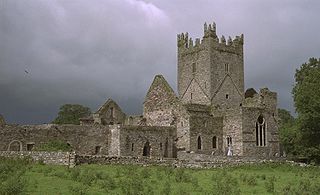 W
WJerpoint Abbey is a ruined Cistercian abbey, founded in the second half of the 12th century, near Thomastown, County Kilkenny, Ireland. It is located 2.5 km south west from Thomastown on the R448 regional road. There is a Visitor Centre with an exhibition. It has been declared a national monument and has been in the care of the Office of Public Works since 1880.
 W
WJohn Wilson FitzPatrick, 1st Baron Castletown PC, known as John Wilson until 1842, was an Irish Liberal politician.
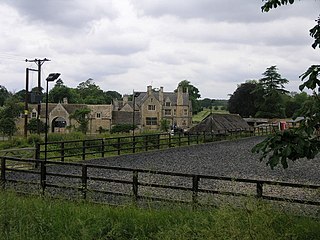 W
WJohn FitzPatrick, 1st Earl of Upper Ossory lived in County Cork in Ireland.
 W
WJohn FitzPatrick, 2nd Earl of Upper Ossory FRS DL, styled 'Lord Gowran' from 1751 to 1758, was an Irish peer and member of parliament.
 W
WLouisa Petty, Marchioness of Lansdowne, known as Louisa Petty, Countess of Shelburne from 1779 until 1784, was the youngest daughter of John FitzPatrick, 1st Earl of Upper Ossory, and his wife Lady Evelyn.
 W
WMac Giolla Phádraig (pronunciation) is a native Irish dynastic surname which translates into English as "Son of the Devotee of (St.) Patrick". In the medieval period, the Mac Giolla Phádraigs were hereditary kings of Osraige; today, the name is commonly translated to "Fitzpatrick".
 W
WMary Fox (1746-1778) 2nd Baroness Holland, was a daughter of John FitzPatrick, and wife of Stephen Fox, 2nd Baron Holland, whom she married on 20 April 1766. They had one son, the notable Henry Vassall-Fox, 3rd Baron Holland born at Winterslow House, Wiltshire, on 21 November 1773.
 W
WOsraige or Osraighe, Osraí, anglicized as Ossory, was a medieval Irish kingdom comprising what is now County Kilkenny and western County Laois, corresponding to the Diocese of Ossory. The home of the Osraige people, it existed from around the first century until the Norman invasion of Ireland in the 12th century. It was ruled by the Dál Birn dynasty, whose medieval descendants assumed the surname Mac Giolla Phádraig.
 W
WThe kings of Osraige reigned over the medieval Irish kingdom of Osraige from the first or second century AD until the late twelfth century. Osraige was a semi-provincial kingdom in south-east Ireland which disappeared following the Norman Invasion of Ireland. A number of important royal Ossorian genealogies are preserved, particularly MS Rawlinson B502, which traces the medieval Mac Giolla Phádraig dynasty back through Óengus Osrithe, who supposedly flourished in the first or second century. and one in the Book of Leinster. Recent analysis of ninth and tenth century regnal succession in Osraige has suggested that in peaceful times, kingship passed primarily from eldest to youngest brother, before crossing generations and passing to sons and nephews.
 W
WSaighir, is a monastic site in Clareen, County Offaly, founded by St. Ciaran the Elder. The Irish state has officially recognized Saighir on the List of National Monuments in County Offaly.
 W
WThe Slieve Bloom Mountains is a mountain range in Ireland. They rise from the central plain of Ireland to a height of 527 metres. While not very high, they are extensive by local standards. The highest points are Arderin at the southwestern end of the range and Baunreaghcong at the end of the Ridge of Capard.
 W
WThe Slieve Bloom Way is a long-distance trail around the Slieve Bloom Mountains in Ireland. It is an 84-kilometre (52-mile) long circular route that begins and ends at Glenbarrow, near the village of Rosenallis, County Laois. It is typically completed in four days. It is designated as a National Waymarked Trail by the National Trails Office of the Irish Sports Council and is managed by Laois County Council, Offaly County Council, Laois Integrated Development Company, Coillte and the Slieve Bloom Development Association. The route was devised by a local man, Tom Joyce, and opened in 1987. The route was developed as part of the designation of the Slieve Bloom area as a European Environment Park in the European Year of the Environment.
 W
WTeige Fitzpatrick, 4th Baron Upper Ossory (d. December 1627) was the son and heir of Florence Fitzpatrick, 3rd Baron Upper Ossory, by his wife Catherine O'More. He married Joan Butler, the daughter of Sir Edmund Butler of Cloughgrenan.
 W
WUpper Ossory was an administrative barony in the south and west of Queen's County in Ireland. In late Gaelic Ireland it was the túath of the Mac Giolla Phádraig (Fitzpatrick) family and surviving remnant of the once larger kingdom of Ossory. The northernmost part of the Diocese of Ossory and medieval County Kilkenny, it was transferred to the newly created Queen's County in 1600. In the 1840s its three component cantreds, Clarmallagh, Clandonagh, and Upperwoods, were promoted to barony status, thereby superseding Upper Ossory.
 W
WBaron Upper Ossory was a title in the Peerage of Ireland. It was created on 11 June 1541 for Barnaby Fitzpatrick. This was in pursuance of the Surrender and regrant policy of King Henry VIII. Under the policy, Gaelic chiefs were actively encouraged to surrender their lands to the king and then have them regranted (returned) under a royal charter if they swore loyalty to him. Those who surrendered were also expected to speak English, wear English-style dress, remain loyal to the Crown, pay a rent and follow English laws and customs, abjure the Roman Catholic Church, and convert to Henry's new Anglican Church.
 W
WEarl of Upper Ossory was a title in the Peerage of Ireland. It was created on 5 October 1751 for John FitzPatrick, 2nd Baron Gowran, who later represented Bedfordshire in the House of Commons. He was the son of Richard FitzPatrick, who had been created Baron Gowran on 27 April 1715, also in the Peerage of Ireland. Lord Gowran had represented Harristown and Queen's County in the Irish House of Commons before his elevation to the peerage. The first Earl's son, the second Earl, also sat as Member of Parliament for Bedfordshire and was Lord Lieutenant of Bedfordshire. In 1794, he was created Baron Upper Ossory, of Ampthill in the County of Bedford, in the Peerage of Great Britain. However, all three titles became extinct on his death in 1818.